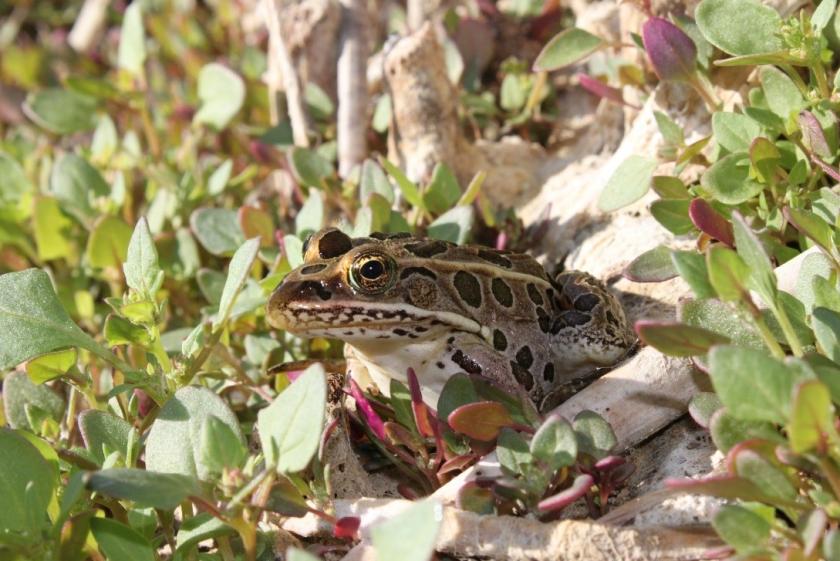Hundreds of endangered northern leopard frogs will leap back into the wild at the Columbia National Wildlife Refuge in Washington’s Grant County this month.
The releases are made possible by a partnership of the Washington Department of Fish and Wildlife , U.S. Fish and Wildlife Service, Oregon Zoo, Washington State University, and Northwest Trek Wildlife Park.
WDFW collected northern leopard frog eggs earlier this spring, and after months of growing at the Oregon Zoo and Northwest Trek Wildlife Park, the frogs are almost ready for release.
WSU researchers will also fit a couple dozen of the frogs with small radio transmitters to help track the frogs’ movements and monitor their survival.
Once abundant throughout North America, northern leopard frogs are rapidly disappearing from their native ranges in Washington, Oregon, and western Canada.
The frog has experienced range-wide declines throughout the western states and Canada. Historical occurrences are from the Columbia Plateau, Okanogan and Canadian Rocky Mountain Ecoregions. Northern leopard frogs were found throughout eastern Washington, and 17 occupied sites were recognized throughout the Columbia, Crab Creek, Pend Oreille, Snake, Spokane, and Walla Walla river drainages. T
The last known population of northern leopard frogs in Washington is located in the Columbia Basin Wildlife Area.
The species has been listed as endangered in Washington since 1999, and with only one known wild population remaining in the wild in the state, there is still a long path to recovery for the frogs.
Likely causes of the frogs’ decline in the Pacific Northwest include habitat loss and degradation, disease, non-native species, and climate change.
“The Washington state population of northern leopard frogs has a unique genetic variation relative to the rest of the species range, and they are part of the natural diversity of amphibians of the region,” said Erica Crespi, WSU associate professor of biology. “We are working to keep them here.”
By raising eggs through tadpole stage to froglets at the Oregon Zoo and Northwest Trek Wildlife Park, the partners are working to bypass these threats through critical growth stages and establish a new population of northern leopard frogs in the region.
“Giving these frogs a headstart by raising them free of predators gives them a better chance of survival,” said Northwest Trek Zoological Curator Marc Heinzman. “We’re very pleased to participate in this critical effort to save an endangered species here in Washington.”
“We’re at a critical point for this species,” said Jennifer Osburn Eliot, who oversees the Oregon Zoo’s frog-rearing efforts. “We’re doing everything we can to help northern leopard frogs thrive again in the Pacific Northwest — and a big, healthy froglet has a much better chance of surviving in the wild than an egg or a tadpole.”
Frogs are often overlooked for their significant contribution to the environment, a fact the agencies and their partners are working to change.
“Northern leopard frogs are an important indicator of water quality due to their permeable skin,” said Emily Grabowsky, WDFW biologist. “If we improve and conserve wetland habitat that is good for frogs, other species will also benefit ranging from other amphibians to waterfowl and deer.”
Funding for the northern leopard frog reintroduction is being provided through a competitive state wildlife grant awarded to WDFW from USFWS’s Wildlife and Sport Fish Restoration program and Potholes Supplemental Feed Route mitigation funds provided by Department of Ecology.
For more info see https://wdfw.wa.gov/species-habitats/species/rana-pipiens

